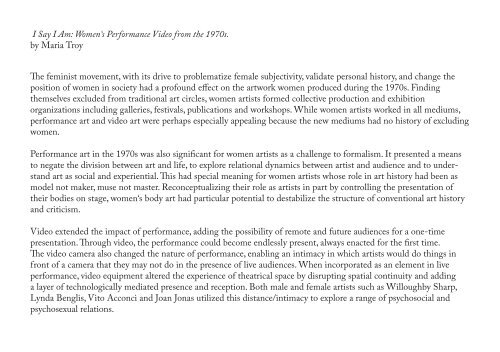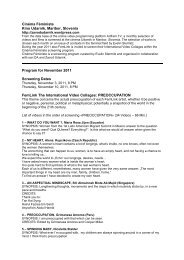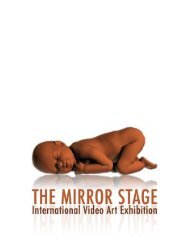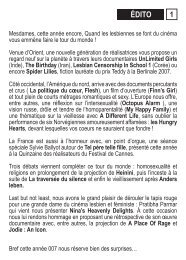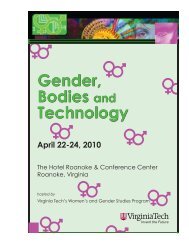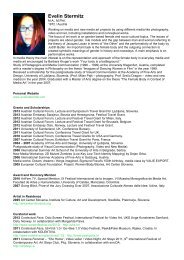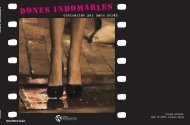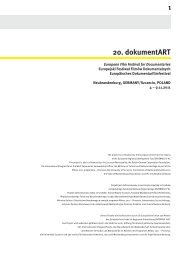NINA SOBELL - Evelin Stermitz
NINA SOBELL - Evelin Stermitz
NINA SOBELL - Evelin Stermitz
You also want an ePaper? Increase the reach of your titles
YUMPU automatically turns print PDFs into web optimized ePapers that Google loves.
I Say I Am: Women‘s Performance Video from the 1970s.<br />
by Maria Troy<br />
The feminist movement, with its drive to problematize female subjectivity, validate personal history, and change the<br />
position of women in society had a profound effect on the artwork women produced during the 1970s. Finding<br />
themselves excluded from traditional art circles, women artists formed collective production and exhibition<br />
organizations including galleries, festivals, publications and workshops. While women artists worked in all mediums,<br />
performance art and video art were perhaps especially appealing because the new mediums had no history of excluding<br />
women.<br />
Performance art in the 1970s was also significant for women artists as a challenge to formalism. It presented a means<br />
to negate the division between art and life, to explore relational dynamics between artist and audience and to understand<br />
art as social and experiential. This had special meaning for women artists whose role in art history had been as<br />
model not maker, muse not master. Reconceptualizing their role as artists in part by controlling the presentation of<br />
their bodies on stage, women‘s body art had particular potential to destabilize the structure of conventional art history<br />
and criticism.<br />
Video extended the impact of performance, adding the possibility of remote and future audiences for a one-time<br />
presentation. Through video, the performance could become endlessly present, always enacted for the first time.<br />
The video camera also changed the nature of performance, enabling an intimacy in which artists would do things in<br />
front of a camera that they may not do in the presence of live audiences. When incorporated as an element in live<br />
performance, video equipment altered the experience of theatrical space by disrupting spatial continuity and adding<br />
a layer of technologically mediated presence and reception. Both male and female artists such as Willoughby Sharp,<br />
Lynda Benglis, Vito Acconci and Joan Jonas utilized this distance/intimacy to explore a range of psychosocial and<br />
psychosexual relations.


